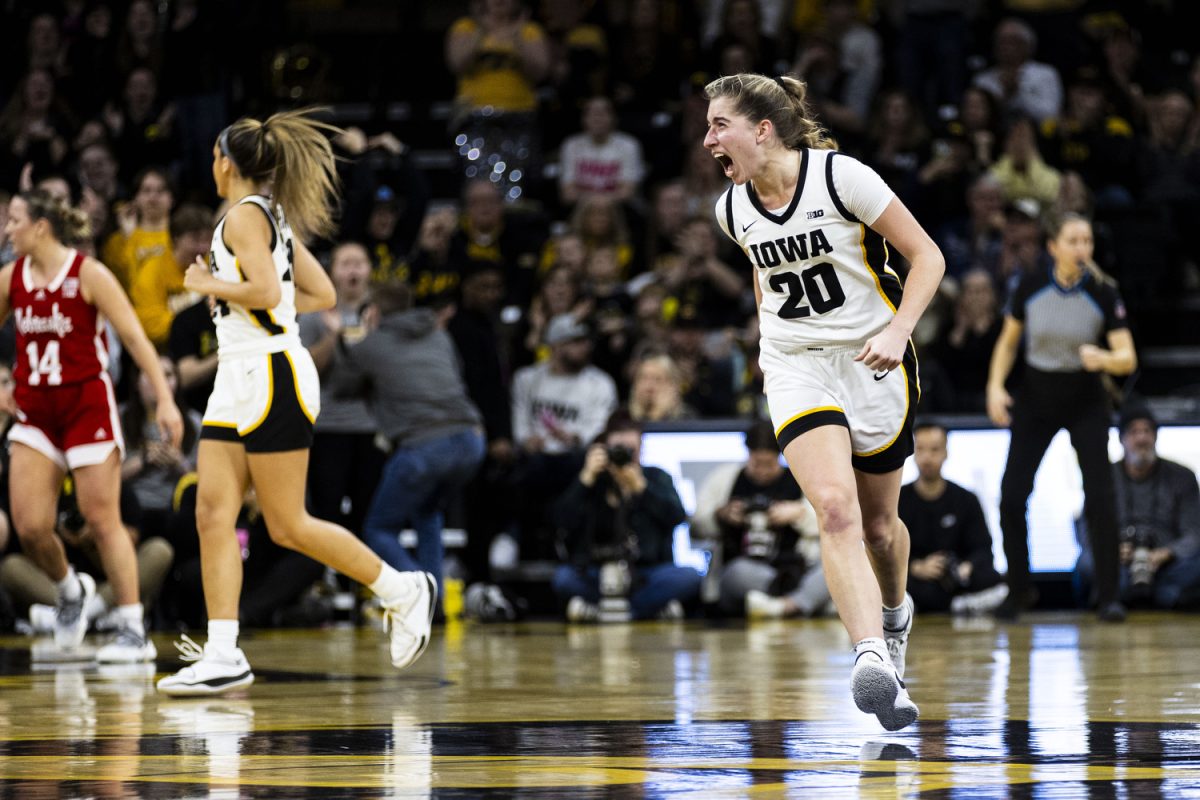Liz Watkins hunched over a laptop computer and watched herself hit a home run.
On the screen, Watkins’ upper body stays over her hips, which rotate just as the bat meets the ball, sending it in an upward trajectory and over a fence. It was a good swing.
But the computer’s monitor is divided into two halves, and on the right half, Watkins watched an at-bat from the previous day. Assistant coach Stacy Johnson clicks through the swing frame-by-frame. Watkins is standing up too tall and leaning forward as the ball reaches her, which drives it downwards.
"That’s the difference between a home run and a single," Johnson told Watkins. "You got a pitch to hit a home run off of there, and you didn’t. We all know you have the power to hit 25 home runs, but you’re not going to with that swing."
Watkins and Johnson were in the middle of a film session using a video software program called Right View Pro. Under Hall of Fame coach Gayle Blevins, who coached the Hawkeye softball team from 1988 to 2010, the team rarely used video footage to enhance its hitting. Watkins said she watched film once last year.
But this season, it’s become a staple of the team’s offensive coaching. All three members of Iowa’s coaching staff used the program at their previous schools, and Johnson said it was an easy decision to bring it to Iowa City.
"So many schools have gone to it now that you’re almost falling behind the curve if you don’t have quality software," she said.
The team installed four cameras at Pearl Field — one behind home plate, one above both dugouts, and one in center field — to provide numerous angles from which to view each swing and pitch.
During games, former player and current student assistant Ashley Vanderloo sits in the press box and records each pitch by location and pitch type.
The next day, interested players can watch their at-bats in slow motion to find mistakes and correct them.
"There are times during games where I struggle with pitches," sophomore Johnnie Dowling said. "So I’ll see where my swing was not as on-point during the game, so I’ll work during practice to fix things. It’s been really beneficial."
Watkins, who calls herself a "visual learner," said the program has helped her in that way.
"Last year, [coaches] would drill in your head, ‘This is what you need to fix,’ " she said. "And you’d say, ‘Yes, OK, Coach.’ But now you’re able to look at it and see for yourself what it looks like."
The program’s features don’t end there. Batters can watch on a split-screen their swing next to a major league hitter’s. Watkins occasionally compares her swing to Minnesota Twin catcher Joe Mauer’s.
It can also act as a scouting tool. Johnson said next year when Iowa plays Northwestern, she can pull up the footage from the teams’ April 16 game and see how often the Wildcats’ pitcher throws each type of pitch. She can also find how often the Hawkeyes recorded a hit, a pop out, a groundball, or any other potential outcome.
But Johnson said she was careful to not rely too heavily on the statistical information generated by the program.
"I try to keep some of it to myself and not overwhelm our players," she said. "I just want them to play the game and not overthink things too much. Because ultimately, the game isn’t played on paper."






